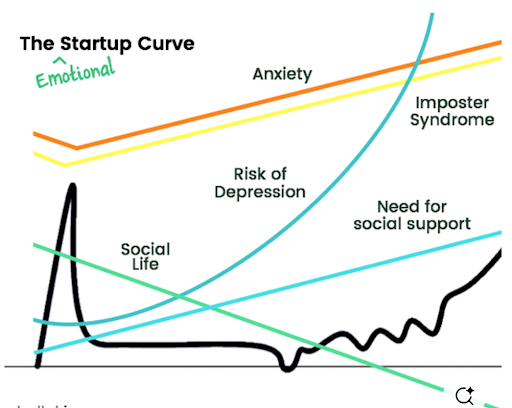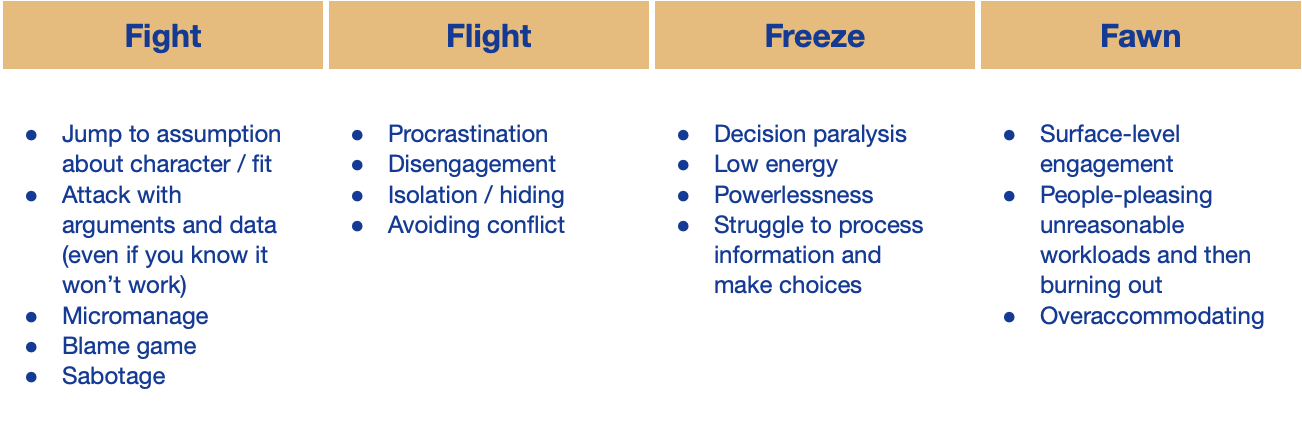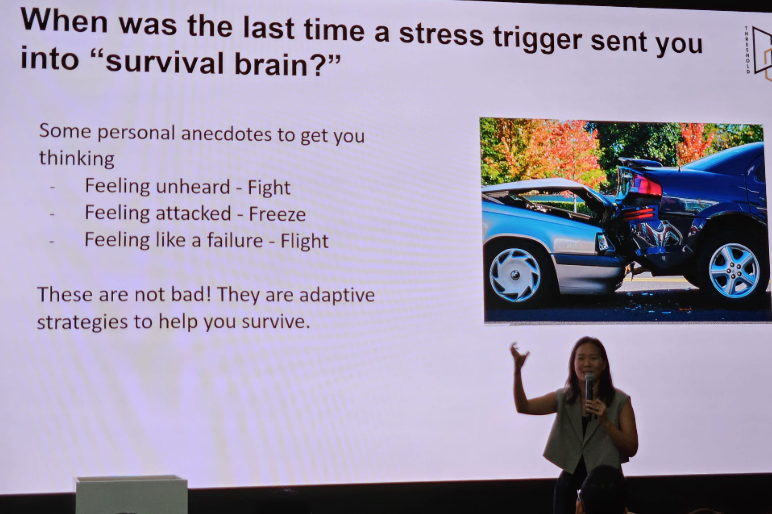Introduction
“I feel like they’re just not hearing me!”
– Henry, Series B founder, during a coaching session
Henry wasn’t wrong about what was happening — but he was trying to solve the wrong problem. He questioned his leadership, considered replacing team members, and cycled between confidence and self-doubt. Sound familiar?

The Founder Threat Cycle
The last 24 months have been an exceptionally high stress rollercoaster for many Southeast Asian founders, given the startup funding crunch, regulatory changes, geopolitical risk, unclear paths to liquidity, and talent fatigue. In high-stress moments, founders often fall back on what they know: working harder, pushing their team, micro-managing, moving faster. But when those tactics stop delivering, repeating them can deepen dysfunction and compound stress.
This often comes down to how we respond to perceived threat.
You’ve probably heard of “fight or flight.” But threat responses also include fawn (people-pleasing) and freeze (shutting down). These instinctive reactions hijack our ability to lead effectively. In today’s world of constant change — economic shifts, AI disruption, fundraising hurdles — founders can get stuck in a near-permanent threat state. Here’s how these reactions often manifest in leadership behavior.

Recognize When You’re in Threat Mode
Founders stuck in threat mode can’t lead effectively. We have seen founders paralyzed in decision-making, unable to act. Others burn out completely. Some boards quietly explore CEO succession, as exhausted founders are no longer able to run their companies optimally.
Unchecked threat states don’t just affect internal culture. They show up in boardrooms, fundraising conversations, and talent retention. Investors can sense it. Teams absorb it. That’s why regulating your state isn’t optional - it’s strategic.
The first step is awareness. The second is resetting, not by pushing harder, but by stepping out of reactivity.
Everyone has different ways to reset — whether that’s movement, solitude, or time with people who ground you. The key is knowing your tools, and using them with intention.
These aren’t just another productivity hack — they help return you to what psychiatrist Dan Siegel calls your “window of tolerance”: the mental and emotional zone where you're calm enough to think clearly, but alert enough to take action. In this state, you can regulate stress, communicate with clarity, make thoughtful decisions, and lead from stability.

From Pace Setter to Environment Designer
Back to Henry: There was no major hiring mistake. His team wasn’t broken. They were simply caught in a shared threat reaction cycle.
Henry defaulted to “fight”: tightening controls, pushing harder, initiating layoffs. His team? “Flight” and “fawn.” Some disengaged. Others over-compensated in unproductive ways. These responses fed into each other — deepening mistrust and burnout.
At this stage, many founders struggle silently. It’s hard to shift from being the pace-setter to the environment designer. That means designing conditions that enable clarity, energy, and trust—not just driving output. But that’s what the moment calls for.
For example, after a layoff, the instinct might be to immediately rally the team. But sometimes the most strategic move is decompression — giving people a moment to breathe. This could mean giving remaining teams some time off to regroup and offering to just listen to their concerns. If you're remote, consider in-person time. Energy, connection, and trust often require real-world presence.
Build Your Support System — Before You Need It
Self-regulation is essential — but it’s incredibly difficult to do in isolation. And in Southeast Asia especially, we’ve noticed a strong cultural hesitation to ask for help.
This is why community matters. Founders need safe spaces to be real — with other people who understand the weight they carry. We believe in the power of organizing and investing in curated communities, and often receive feedback from founders how helpful they have found such gatherings. A single confidant (a partner, a mentor) is not enough. You need a system:
- Peers who validate and normalize your experience
- Mentors who offer clarity and perspective
- Coaches or therapists who are dedicated to supporting your growth
- Friends, family, even pets who provide emotional grounding
.png)
Final Note
Breaking the threat cycle doesn’t require a life overhaul. It starts with a single choice: to lead from groundedness, not survival; to build the internal and external scaffolding needed to show up with clarity, conviction, and care.
You don’t need to wait for a crisis. Start small. Start now.
About the Writers:
- Karen Tay is a CEO Advisor, coach and fractional Head of People to high growth companies in Silicon Valley and Southeast Asia. She works with founders and CEOs to design people and operational systems — from values and talent strategy to performance management, internal comms, and exec team coaching. You can reach out to her via LinkedIn.
- Cheryl Liew heads up Talent at Monk’s Hill Ventures, where she works with founders, operators and investors to grow the Southeast Asia tech ecosystem. She has first hand experience building startup teams in the Bay Area and Asia, and as a former restaurant owner/ operator.















